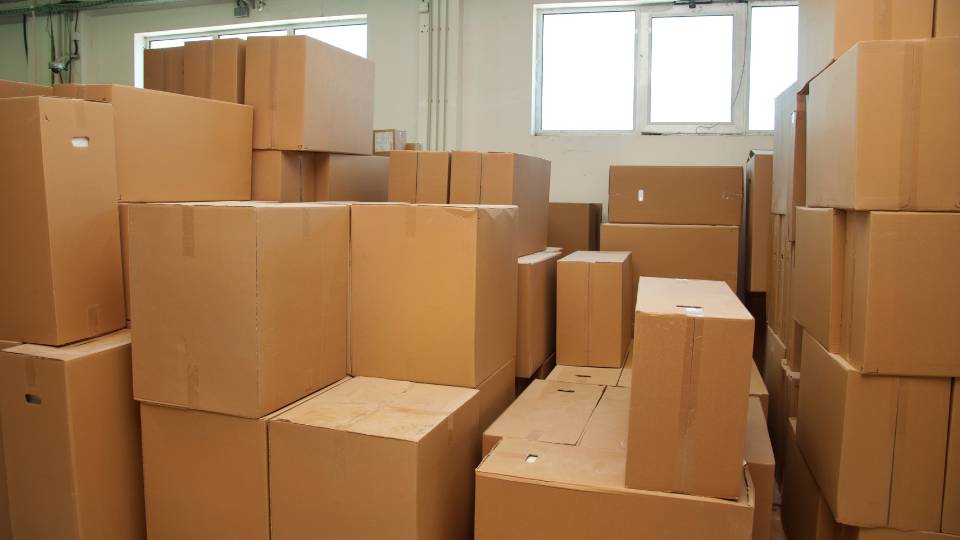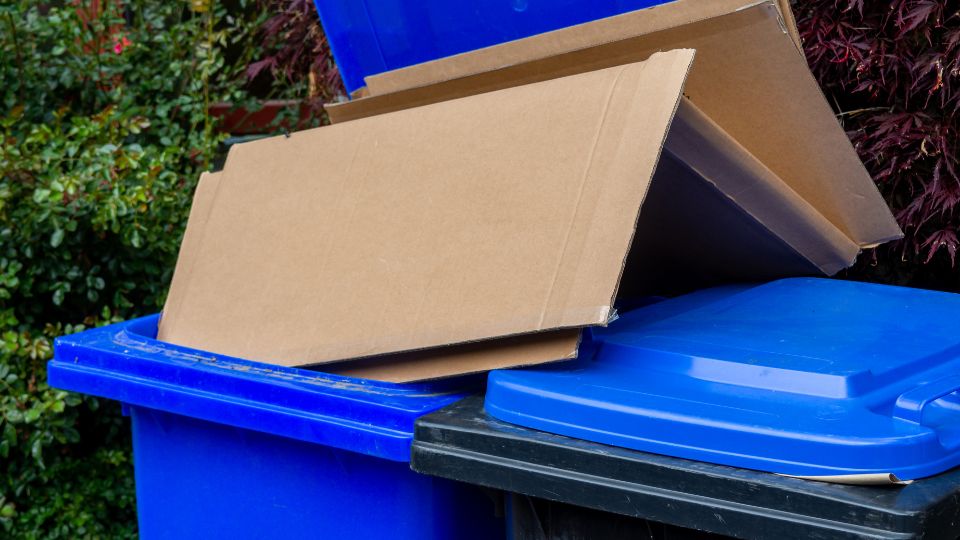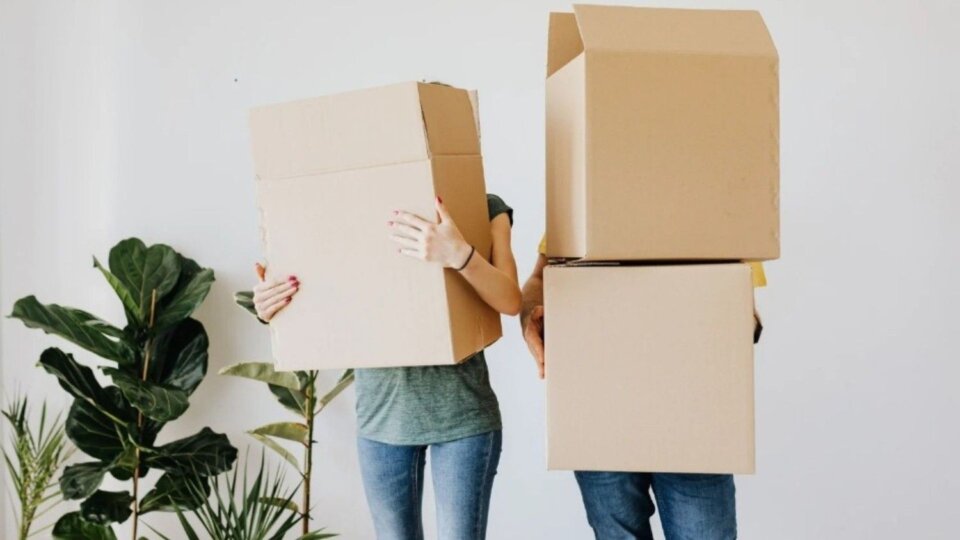
Cardboard boxes are everywhere.
They deliver our online purchases, house our favourite cereals, and even serve as makeshift forts for the little ones.
But what happens to these boxes once their purpose is served?s
The good news: cardboard is one of the most readily recyclable materials!
Recycling cardboard keeps it out of landfills, reduces the need for cutting down trees, and even saves energy.
This blog is your one-stop guide to becoming a cardboard recycling champion.
Table of Contents
- Why Recycle Cardboard?
- Can All Cardboard Be Recycled?
- Cardboard Recycling: A Step-by-Step Guide
- Advanced Cardboard Recycling Tips
- Can Cardboard Cups be Recycled?
- Cardboard Recycling Around the World
- The Future of Cardboard Recycling
- Challenges and Solutions for Cardboard Recycling
- How You Can Make a Difference
- Can wet cardboard be recycled?
- Conclusion
Why Recycle Cardboard?
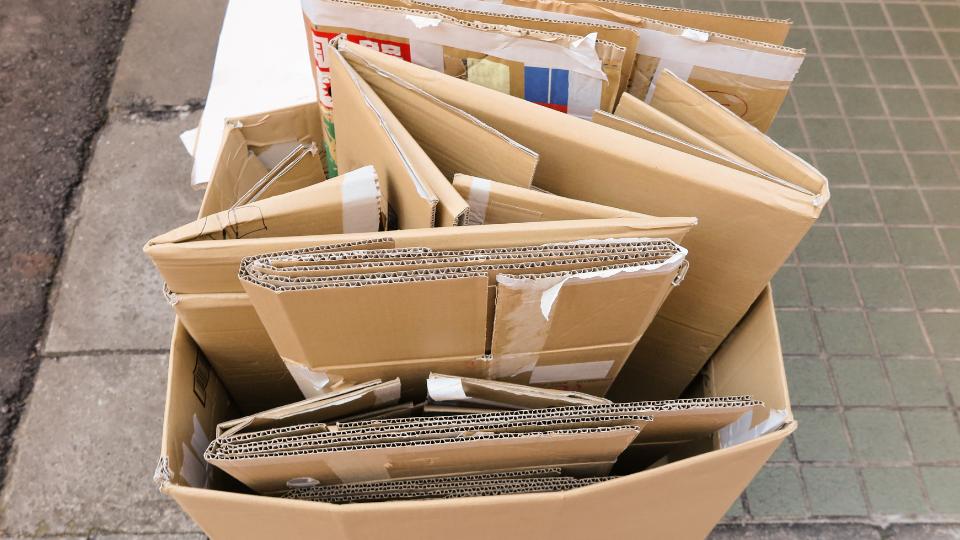
There are numerous environmental and economic benefits to recycling cardboard:
- Reduces Landfill Waste: Landfills are overflowing, and cardboard takes up a significant amount of space. Recycling diverts it from landfills, allowing for better waste management.
- Saves Trees: The production of virgin cardboard requires cutting down trees. Recycling existing cardboard reduces the demand for new trees, protecting our forests.
- Conserves Energy: The process of creating new cardboard from scratch is energy-intensive. Recycling uses significantly less energy, making it a more sustainable option.
- Reduces Greenhouse Gases: Deforestation and energy consumption contribute to greenhouse gas emissions. Recycling cardboard helps combat climate change.
- Creates Jobs: The recycling industry employs a significant number of people in collection, sorting, and processing facilities.
Can All Cardboard Be Recycled?
Most cardboard is recyclable, but there are a few exceptions to be aware of:
- Waxed or Greasy Cardboard: Cardboard heavily contaminated with food residue, grease, or oil cannot be recycled in most curbside programs, especially in the case of pizza boxes. However, some specialised facilities might accept them. Check with your local waste management provider.
- Wet Cardboard: Soaked cardboard loses its structural integrity and becomes difficult to process in recycling facilities.
- Cardboard with Metallic Linings: Some food packaging, like frozen pizza boxes, have a thin metallic lining. These might not be accepted in all curbside programs. Check local guidelines.
- Composite Cardboard: This type of cardboard combines cardboard with other materials like plastic film. While some recycling facilities might be able to handle it, it’s best to check first.
Cardboard Recycling: A Step-by-Step Guide
Ready to turn your cardboard boxes into eco-friendly heroes?
Here’s a simple guide:
- Break Down the Boxes: Flatten cardboard boxes to save space in your recycling bin. This also helps with sorting at the recycling facility.
- Remove Extras: Take out any packing peanuts, plastic inserts, or tape before placing the cardboard in the bin. These materials might contaminate the cardboard and hinder the recycling process.
- Check Local Guidelines: While most cardboard is recyclable, there might be slight variations in accepted materials depending on your location. Always check your local waste management provider’s website or recycling guidelines for specific instructions.
- Keep it Clean (Mostly): Minor food residue or dust won’t affect the recycling process. However, heavily soiled cardboard might not be accepted.
- Recycle Right: Once your cardboard is prepped, place it in your designated recycling bin. Don’t forget to check if your community has separate bins for cardboard or mixed paper recyclables.
Advanced Cardboard Recycling Tips
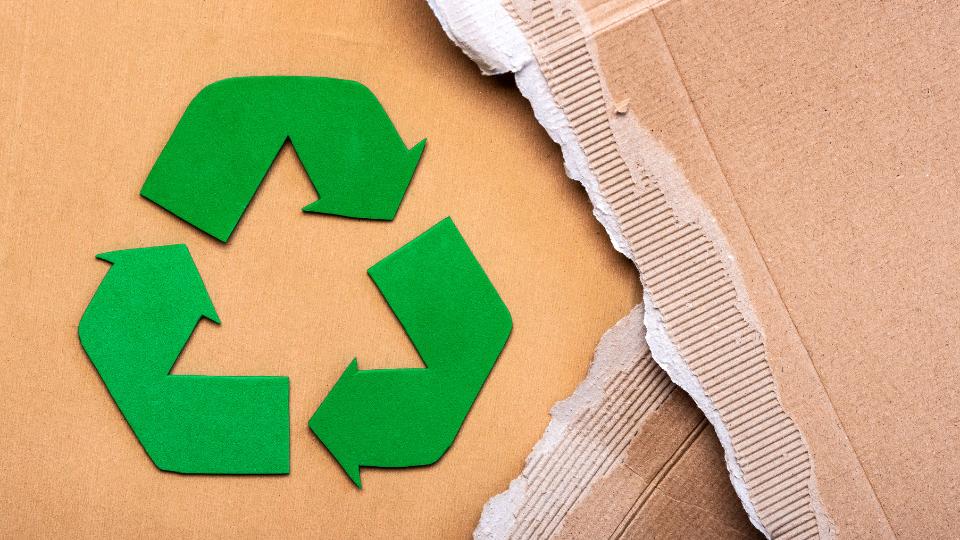
Here are some additional tips to become a cardboard recycling superstar:
- Compost Cardboard Scraps: Small, uncontaminated cardboard scraps can be composted. Shred them first to aid decomposition.
- Get Creative with Reuse: Before sending cardboard straight to recycling, consider ways to reuse it. Cardboard boxes can be used for storage, crafting projects, or even creating makeshift furniture.
- Spread the Word: Talk to your friends, family, and neighbours about the importance of cardboard recycling. The more people who recycle, the greater the environmental impact.
Can Cardboard Cups be Recycled?

Cardboard cups are trickier.
Their plastic lining makes them unsuitable for most curbside programs.
Check with your local provider for any exceptions.
Composting might be an option in some cases.
Otherwise, reuse or prioritise avoiding them altogether.
The future looks promising for more sustainable cup designs.
Cardboard Recycling Around the World
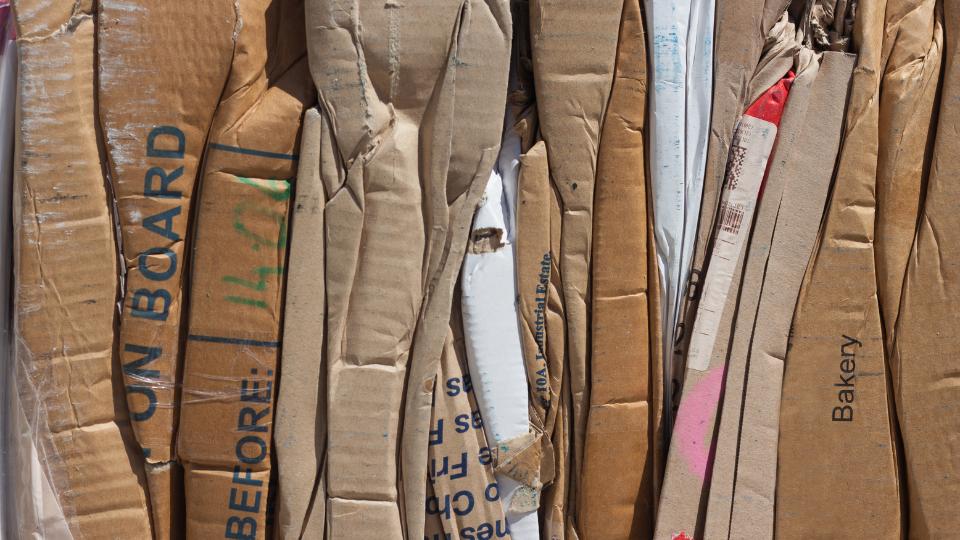
Cardboard recycling rates vary significantly across the globe.
Here’s a quick snapshot:
- North America: Recycling rates for cardboard in North America are around 70%, with some regions exceeding 80%.
- Europe: Statista reported that cardboard recycling rates in Europe are generally high, with some countries exceeding 85%.
- Asia: Recycling rates in Asia are on the rise, with China being a major player in the global cardboard recycling market.
While these statistics are encouraging, there’s still room for improvement.
By promoting awareness and implementing efficient recycling programs, we can increase cardboard recycling rates globally.
Enjoying this content? Read more in our cardboard myths debunked blog!
The Future of Cardboard Recycling
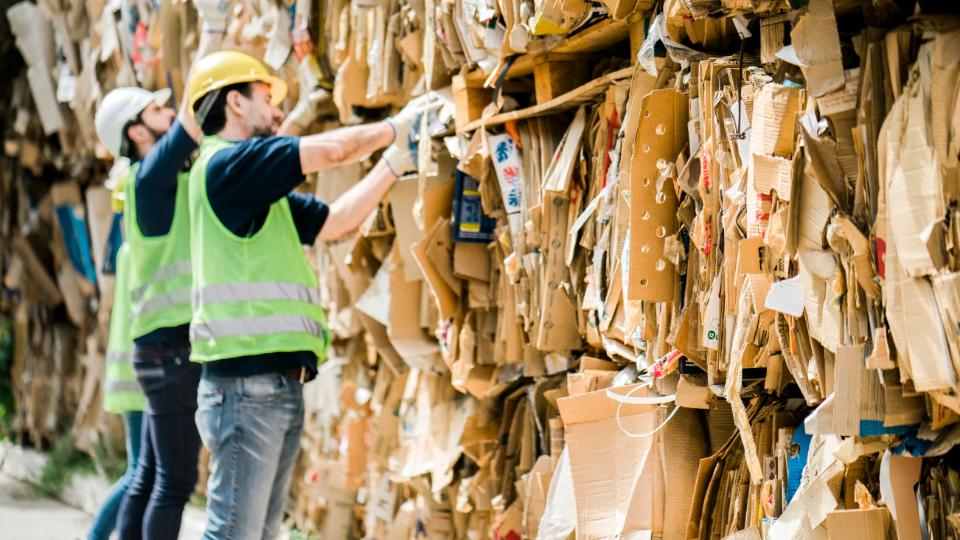
The future of cardboard recycling is bright. Here are some exciting developments to keep an eye on:
- Advanced Sorting Technologies: New technologies using artificial intelligence and robotics are being developed to improve the sorting of recyclable materials, including cardboard.
- Biodegradable Cardboard: Research is underway on developing cardboard made from sustainable and biodegradable materials like bamboo or hemp. This could further reduce the environmental impact of cardboard production.
- Closed-Loop Recycling: The concept of a closed-loop system aims to create a circular economy for cardboard. Recycled cardboard would be used to create new cardboard products, reducing waste and maximising resource use.
Challenges and Solutions for Cardboard Recycling
Despite the positive outlook, there are challenges facing the cardboard recycling industry:
Problems
- Contamination: Mixing non-recyclable materials with cardboard contaminates the recycling stream and disrupts the process. Educational campaigns and improved sorting systems are crucial to address this.
- Infrastructure Limitations: Not all regions have access to efficient recycling infrastructure. Investments in collection systems, sorting facilities, and processing plants are needed to improve accessibility.
- Economic Fluctuations: Global market fluctuations can impact the demand for recycled cardboard. Policy initiatives and market incentives can help stabilise the industry.
Solutions
- Public-Private Partnerships: Collaboration between governments, waste management companies, and recycling facilities can address infrastructure limitations and promote innovation.
- Producer Responsibility Programs: These programs hold manufacturers responsible for the lifecycle of their products, including the recyclability of their packaging.
- Consumer Education: Raising awareness about proper cardboard recycling practices among consumers is critical for a successful recycling system.
How You Can Make a Difference
Here are some actionable steps you can take to promote cardboard recycling:
- Be a Recycling Champion: Become an informed recycler by understanding your local recycling guidelines and sorting your cardboard correctly.
- Support Sustainable Businesses: Choose products with minimal packaging or packaging made from recycled cardboard.
- Advocate for Change: Contact your local representatives and urge them to support policies that promote recycling and sustainable waste management.
- Spread Awareness: Talk to your friends, family, and neighbours about the importance of cardboard recycling. Share your knowledge and encourage them to adopt eco-friendly practices.
By following these tips and getting involved, you can play a vital role in maximising cardboard recycling and creating a more sustainable future. Remember, every recycled cardboard box makes a difference!
Can wet cardboard be recycled?
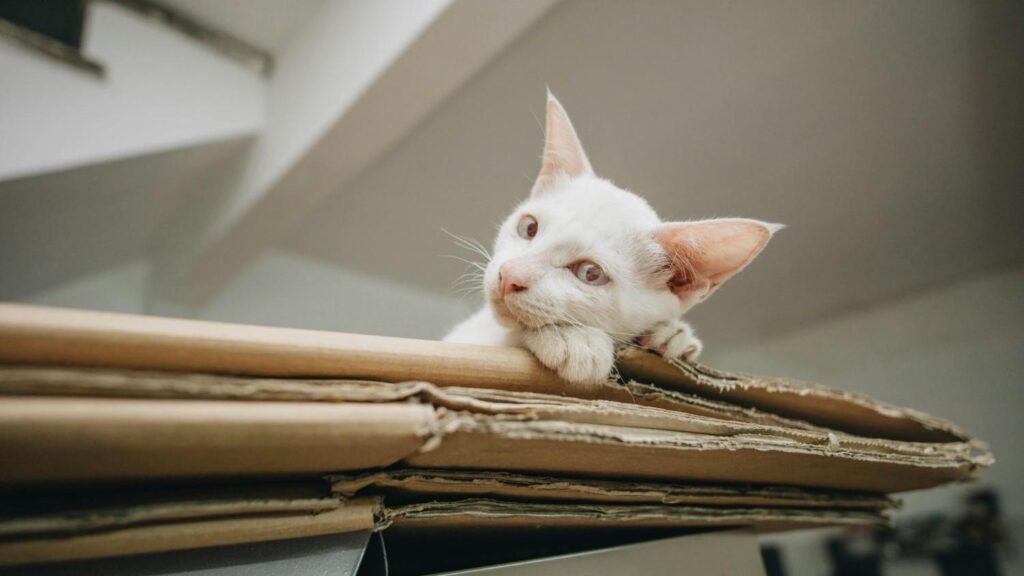
Wet cardboard can technically still be recycled, but it may not be ideal for the recycling process and may cause some issues.
Wet cardboard is more difficult to handle and can easily break apart, causing problems during the recycling process.
Additionally, wet cardboard can contaminate other materials in the recycling stream, making them unsuitable for recycling as well.
If you have wet cardboard that needs to be recycled, it is best to try to dry it out as much as possible before putting it in your recycling bin.
If the cardboard is too wet, you may need to dispose of it in the regular trash instead.
It’s also a good idea to check with your local recycling program to see if they have any specific guidelines or restrictions for wet cardboard.
Conclusion
Cardboard recycling is a simple yet powerful way to reduce our environmental impact. By understanding the benefits, learning the process, and taking action, we can all contribute to a greener tomorrow.
Let’s continue to innovate, educate, and work together to ensure cardboard gets a second life, not a landfill sentence.
Bonus Tip: Organise a community cardboard recycling drive! This is a great way to collect large volumes of cardboard for recycling while raising awareness in your neighbourhood.
This blog post should give you a comprehensive overview of cardboard recycling, from the basics to future trends and actionable steps. With a little effort, we can all turn those cardboard boxes into symbols of environmental responsibility.

